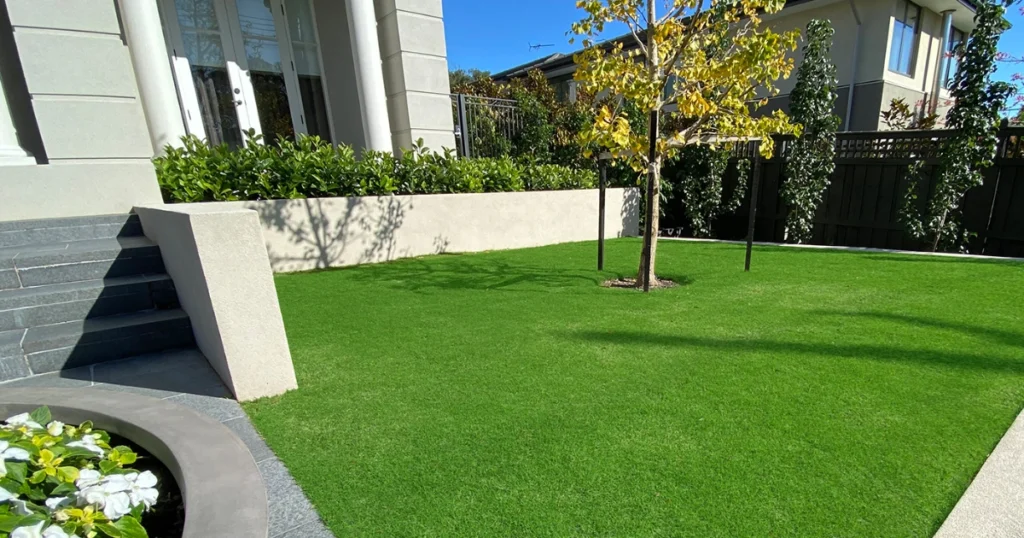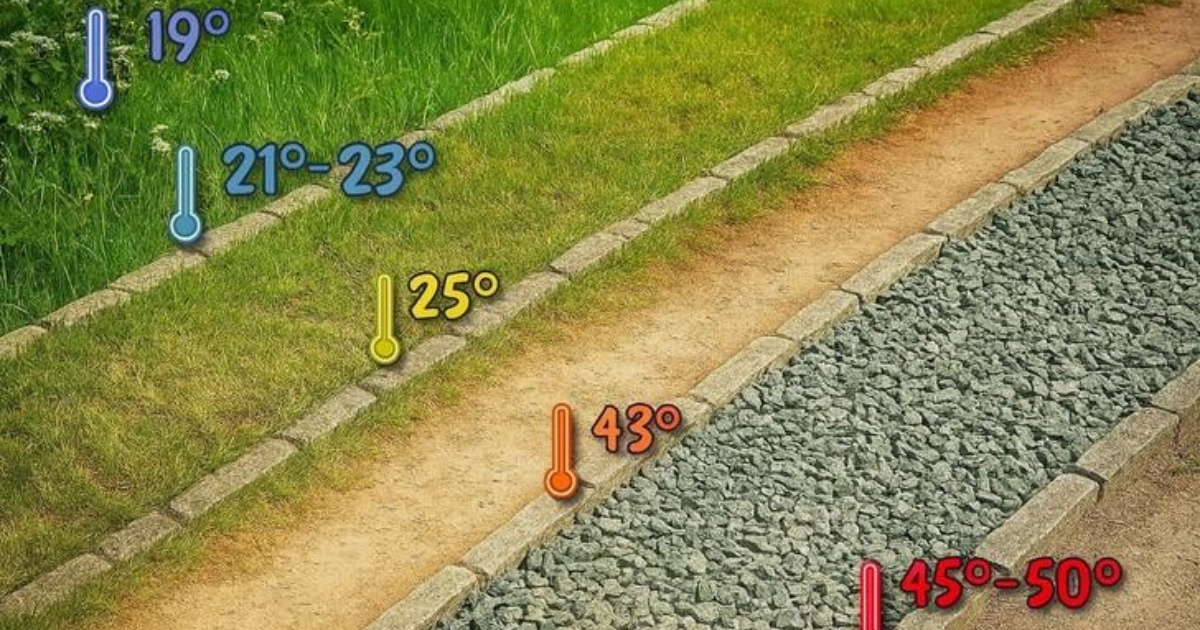Cities around the world face a growing challenge during hot summer days: concrete and stone absorb and retain large amounts of heat, turning streets and buildings into giant ovens. This phenomenon, known as the urban heat island effect, keeps temperatures high even after the sun sets, making urban living uncomfortable and, in some cases, dangerous.
Green spaces offer a powerful, natural remedy. Unlike hard, heat-trapping surfaces, grass and vegetation act as nature’s own cooling system. Their low thermal mass and the process of transpiration — where plants release water vapor — help lower surrounding temperatures significantly.
How Green Spaces Cool Cities
During daylight hours, plants use much of the sun’s energy for photosynthesis instead of allowing it to be converted entirely into heat. This process naturally regulates surface temperatures. While concrete can easily reach over 50°C on a hot day, grass often stays under 30°C. The temperature difference is not just measurable — you can feel it instantly by walking barefoot from pavement onto a lawn.
This cooling effect makes parks, green roofs, and planted courtyards essential features in urban areas. They not only create more comfortable environments but also improve air quality, reduce noise, and provide habitats for wildlife.
The Health and Environmental Benefits of Urban Greenery
Incorporating vegetation into urban planning goes far beyond aesthetic value. Research shows that green areas in cities can:
- Reduce air pollution by filtering harmful particles and gases.
- Improve mental well-being by offering calm, natural environments for relaxation.
- Lower energy costs as cooler outdoor spaces reduce the need for air conditioning.
- Increase biodiversity by providing shelter and food sources for birds, insects, and small mammals.

For city dwellers, these benefits translate into better quality of life, healthier communities, and more sustainable neighborhoods.
Practical Ways to Make Cities Greener
Urban greenery can take many forms — from large public parks to small-scale community initiatives. Here are some effective strategies:
1. Green Roofs and Walls
Covering rooftops and building façades with vegetation not only reduces heat absorption but also helps insulate buildings, lowering energy use year-round.
2. Pocket Parks
Unused urban plots or small corners between buildings can be transformed into micro-parks that provide shade, seating, and fresh air for pedestrians.
3. Urban Tree Planting
Strategically planting trees along streets, in parking lots, and near public spaces can provide immediate shade, reduce surface temperatures, and improve air quality.
4. Permeable Surfaces
Replacing asphalt and concrete with permeable materials, combined with vegetation, allows for better water absorption and reduces surface heat.
5. Community Gardens
Engaging residents in planting vegetables, herbs, and flowers not only adds greenery but also fosters community bonds and promotes healthy living.
Why the Future of Cities Must Be Green
As climate change intensifies heatwaves and extreme weather, cities must rethink their reliance on heat-retaining materials. High-tech cooling solutions exist, but they often come with high costs and environmental drawbacks. The simplest, most sustainable approach is to integrate more nature into urban environments.
Green infrastructure creates a self-regulating cooling network that works passively and continuously. By reducing the proportion of hard surfaces and increasing vegetation, cities can significantly lower ambient temperatures, improve air quality, and make urban living more resilient to climate change.
FAQs
1. What is the urban heat island effect?
It’s a phenomenon where urban areas become significantly warmer than surrounding rural areas due to heat retention by concrete, asphalt, and other hard surfaces.
2. How can green roofs help reduce urban heat?
Green roofs absorb less heat than traditional roofing materials, help insulate buildings, and release moisture into the air, lowering surrounding temperatures.
3. Are small green spaces as effective as large parks?
While larger parks have greater cooling effects, even small patches of greenery can contribute to temperature reduction and improved air quality when strategically placed.
4. Can greenery really reduce air conditioning use?
Yes. By cooling the surrounding air, green spaces reduce the heat load on buildings, which can lower energy consumption for cooling.
5. How can residents get involved in greening their cities?
Joining community garden projects, advocating for tree planting, and supporting local green initiatives are all effective ways to contribute.
Main keyword: urban green spaces
LSI/NLP keywords used: urban heat island, green roofs, city cooling, sustainable cities, community gardens, green infrastructure, urban trees, climate-resilient cities
Internal link suggestions from secretsofthegreengarden.com:
- “How to Design a Rooftop Garden for Maximum Cooling”
- “Best Shade Trees for Urban Environments”
- “Low-Maintenance Plants for City Gardens”
External link suggestions:


9plvym
Aumentará la confianza en el sitio web
Grado de autoridad del dominio (DR de Ahrefs)
Mejorará la credibilidad en el sitio web.
El posicionamiento de tu sitio web es crucial para el SEO.
Nos dedicamos a atraer robots de búsqueda de Google a tu sitio para impulsar su visibilidad.
Existen dos grupos fundamentales de robots de búsqueda:
Robots de exploración – los primeros en entrar al sitio.
Indexadores automáticos – visitan el sitio después de los de rastreo.
A mayor número de accesos de estos robots a tu sitio, mayor será tu visibilidad.
Antes de comenzar, te proporcionaremos una evidencia del Domain Rating desde Ahrefs.
Después de terminar el trabajo, también obtendrás una prueba reciente del nivel de tu sitio en Ahrefs.
Abona únicamente cuando obtengas resultados.
Tiempo estimado de entrega: de 3 a 14 días.
Trabajamos con sitios de hasta DR 50.
Para gestionar tu pedido necesitamos:
La dirección de tu web.
Un término principal.
Este servicio no se aplica a redes sociales.
Website backlinks SEO
Locate us by the following search terms: backlinking for websites, SEO backlinks, backlinks for Google, link building service, backlink creator, acquire backlinks, backlink service, website backlinks, order backlinks, backlinks via Kwork, backlinks for websites, website SEO links.
Backlinks for your site
Effective throughout all themes of the portal.
I make reference links to your site.
These backlinks engage indexing bots to the resource, which is crucial for search visibility, therefore it matters to enhance a platform free of errors that affect negatively visibility.
Positioning poses no risk for your domain!
I do not write in communication fields, (contact forms are harmful the platform because of reports from site owners).
Posting is carried out in authorized locations.
Backlinks are posted to updated regularly updated database. A large number of platforms in the database.
https://t.me/s/official_1win_aviator/175
https://t.me/official_1win_aviator/184
https://t.me/official_1win_aviator/512
https://t.me/Best_promocode_rus/879
https://t.me/s/ef_beef
https://t.me/officials_pokerdom/3817
برای دوستانی که به دنبال یک راهکار مطمئن برای وریفای حساب در بروکرهای فارکس هستند، پیشنهاد میکنم خدمات شوپی را بررسی کنند. این مجموعه به صورت تخصصی، وریفای قانونی حساب های فارکس را با مدارکی ارائه میدهد که کاملاً معتبر بوده و به نام خودتان صادر میشود. این روش دائمی است و ریسک بلاک شدن حساب شما را به صفر میرساند. کیفیت و پشتیبانیشان واقعاً عالی است.
https://t.me/s/iGaming_live/4871